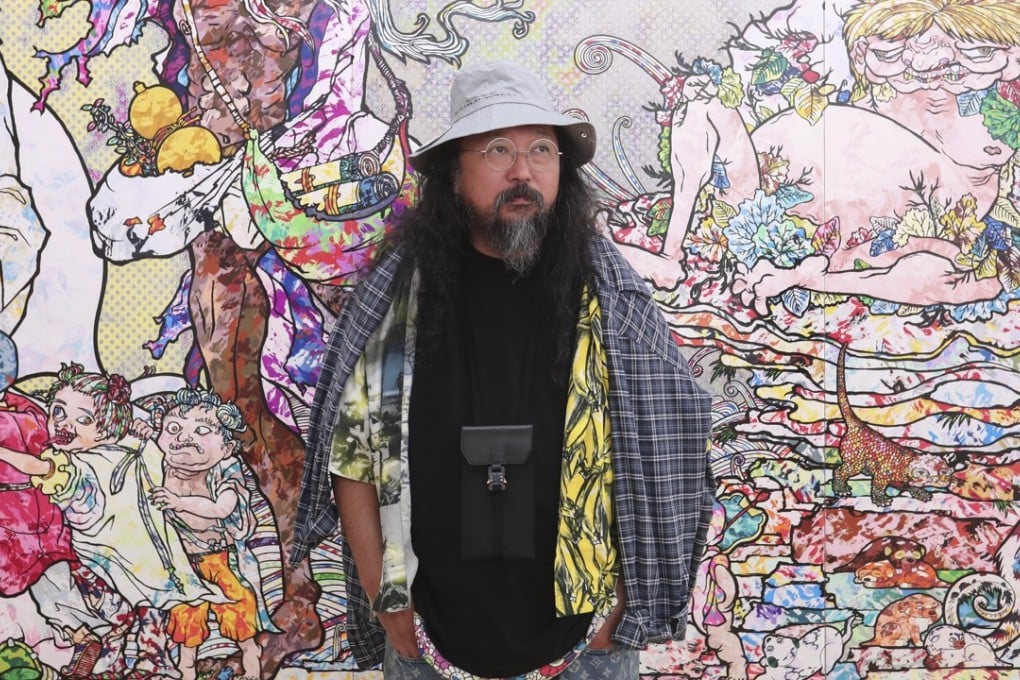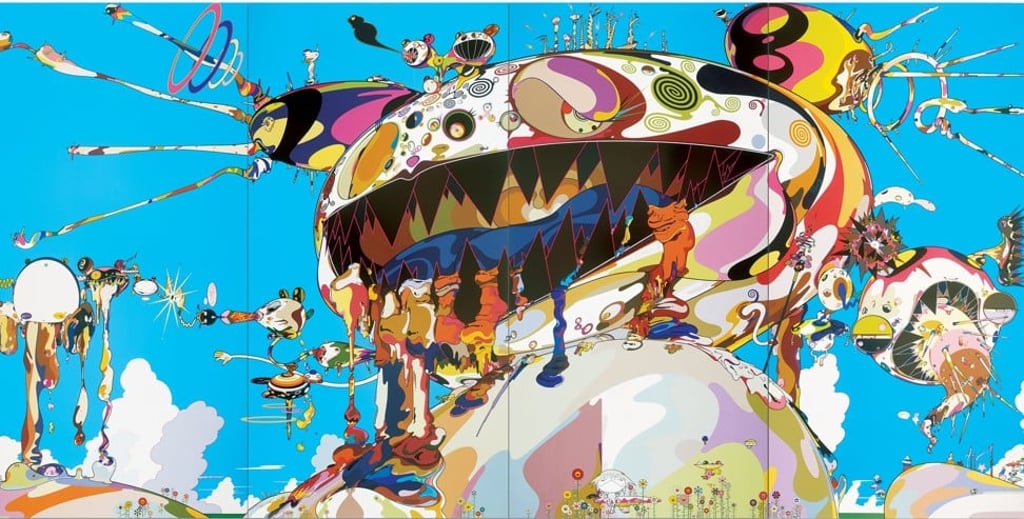New Takashi Murakami show at Gagosian Hong Kong looks to youth and the inevitable future
Japanese contemporary artist’s new exhibition blends fine art with commercial media in another example of his knack for blurring the lines between what is regarded as high and low art

If Takashi Murakami had had his way, the original title for his new show at Gagosian Hong Kong would have been a first-person narrative almost worthy of his namesake, Haruki (a Japanese author known for this style of writing).
It originally began, “I think 2018 has been quite an amazing year for artist Takashi Murakami”; he then compared himself to a fish (at its peak fattiness), included congratulations on his guts, energy and spirit and concluded by noting that the Hong Kong exhibition takes place in the autumn of this optimal year. Nick Simunovic, the gallery’s director, preferred something snappier, however; the exhibition is now called “Change the Rule!”
The tale of the two titles is told, in Japanese characters, on a relatively tiny acrylic painting at the entrance to his show. This, apparently, is an act of contrition for not finishing a more monumental piece in time for the show. Visitors to the gallery are provided with a translated version of his artistic torment: “Right at this moment, as I write this text on this painting … I feel like crying for help.” As excuses for missing a deadline go, it’s a glum picture. Meanwhile, brilliant Murakami flowers grin, with sinister insistence, from nearby walls.

The past 18 months have certainly been relentless for him. Murakami has been the subject of at least half-a-dozen major shows, including “The Octopus Eats Its Own Leg”, which originated at the Museum of Contemporary Art Chicago – where it broke the visitor record previously held by a David Bowie retrospective – and ended in Fort Worth’s Modern Art Museum on September 16.
When Gagosian London mounted a show in March called “Future History” with Murakami and Virgil Abloh, founder of designer label Off-White and now artistic director of menswear at Louis Vuitton, the queues began forming at 3am. The gallery had, cannily, timed it during London Fashion Week and the pair created a limited edition of 400 T-shirts.